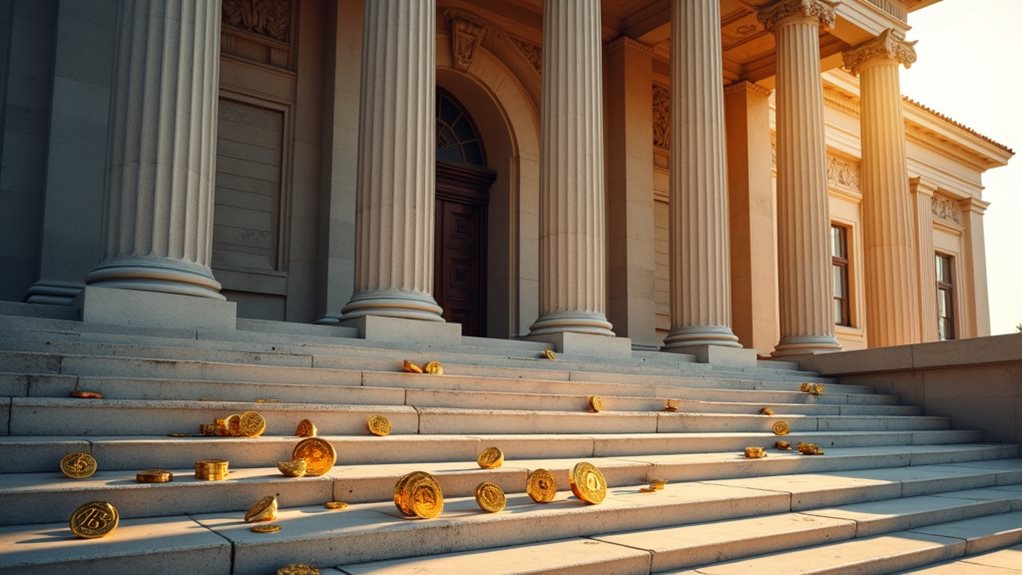Federal Reserve Chair Jerome Powell is dead serious about slapping oversight on stablecoins, no ifs or buts. He’s pushing for regulation on these $227 billion digital coins, calling them “a form of money.” Yet, with a smirk, he’s also cozying up to crypto innovation—hinting at looser bank rules for legal firms. Consumer protection? Non-negotiable. Transparency? A must. Risks? Sky-high concern. Stick around to uncover the full scoop on this balancing act.

Buckle up, folks—Federal Reserve Chair Jerome Powell is sounding the alarm on stablecoins, and he’s not mincing words. The man at the Fed’s helm is basically shouting from the rooftops that we need a regulatory framework for these digital coins. Why? Because they’re becoming a big deal. Like, $227 billion big, with USD-pegged coins leading the charge. Powell’s not just whistling Dixie here; he’s calling stablecoins “a form of money,” as he bluntly put it in his June 2023 testimony.
And with nearly $14 trillion in transfer volume last year—yep, more than Visa—these things aren’t some nerdy side hustle anymore.
Let’s be real. Stablecoins have “fairly wide appeal,” Powell admits, and could play a huge role for consumers and businesses in the US economy. Payments, digital settlements—you name it, they’re in the game. But here’s the kicker: there’s no federal oversight. Nada. Zilch. Past efforts with Congress flopped, but Powell’s sniffing a change in the air. Lawmakers are finally perking up, revisiting legislation like the GENIUS Act, which passed the Senate Banking Committee, and the STABLE Act, with its tough rules on issuers. About time, right? Powell also emphasizes that the Fed is ready to engage with digital asset policy to address this growing sector digital asset policy. Additionally, Powell highlights the need for a comprehensive structure to integrate stablecoins into traditional finance comprehensive structure. The SEC’s recent declaration that fully-backed stablecoins are not securities has created newfound clarity in the crypto industry.
Let’s get serious. Stablecoins have wide appeal for payments and settlements, but there’s zero federal oversight. Time for Congress to step up!
Still, Powell’s not all rainbows and crypto dreams. He’s hammering on consumer protection and transparency. If we’re doing this, let’s do it right—protect the little guy, keep things clear, and don’t let innovation turn into a Wild West disaster.
He’s pushing for oversight that balances risks while letting the tech breathe. Because, let’s face it, stablecoins could go systemically important overnight. Failures and frauds in the crypto world? They’ve spooked the Fed before. No more surprises, thanks.
And the Fed’s role? Powell says they’re all in—supporting Congress, not cutting off banks from legal crypto firms, even hinting at loosening some tight-fisted guidance. But make no mistake, stablecoin risks are a “very high priority.” Systemic importance isn’t a joke.









